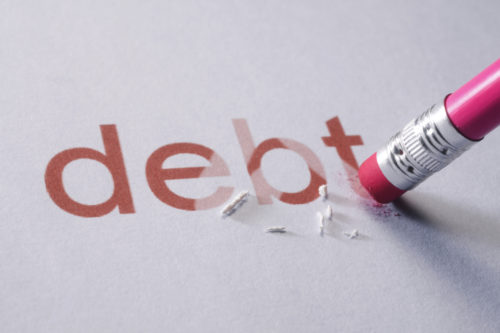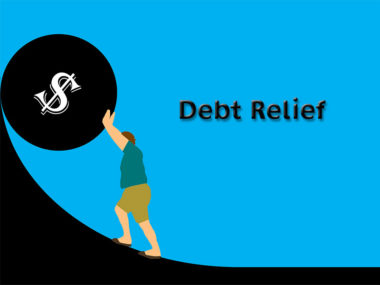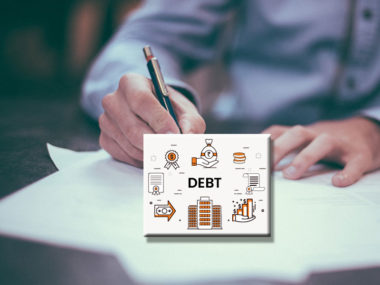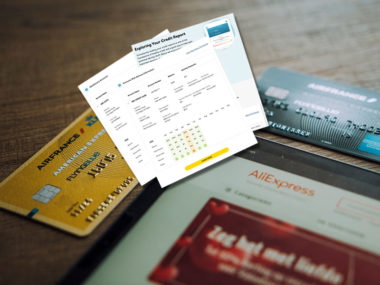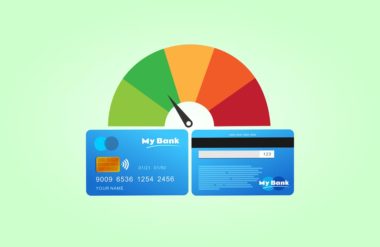There are two common methods of debt reduction: the snowball method and the avalanche method. As a snowball rolls downhill, it gathers speed. Avalanches start large and get smaller as they continue downward. The same is true of these debt-elimination methods and the associated payments.
Table of Contents
What Is the Debt Avalanche Method?
While the snowball method encourages you to start with the smallest balance, the avalanche method starts with the largest interest rate. This may mean paying off the largest debt first, a middle-sized debt or the smallest debt you have, but the goal is to save you money by eliminating the highest interest rates and fees first.
Using the Debt Avalanche Method
Using the debt avalanche method correctly requires that you:
1. Build a Debt Avalanche Worksheet
To start out, you’ll want to build a debt avalanche worksheet. This can be a simple piece of paper or a spreadsheet. You’ll want to include at least three columns. These columns should include:
- The total amount of each debt;
- The minimum payment for each debt;
- The interest rate on each debt.
2. List All Debts in Ascending Order of Interest Rate
Now, put the debts in order, starting with the debt with the highest interest rate first, the next highest second, and so on. Unlike the snowball method, you can ignore the balance on each debt and just focus on the interest rate you owe on the accounts.
3. Prioritize the Debt With the Highest Interest Rate
When you’ve identified the debt with the highest interest rate, you can notate this as the debt you’ll be paying more than the minimum payment on every month. Every other debt will be paid at the minimum rate until the first debt is paid in full. To make this part work, you’ll definitely need to create an accurate budget, covering all the debts you owe each month.
For example: If you have three debts of $450, $700 and $1,400 at rates of 15%, 25% and 2%, you’ll start paying on the $700 debt first, the $450 debt second and $1,400 debt third.
4. Repeat for Each Debt, Going After the Next-Highest Interest Rate
As each is paid off, you can then take the money you paid toward the first debt and add it to the minimum payment for the second debt, increasing the amount you’re paying on the second loan and paying it off much faster than if you only paid the minimum amount every month.
To make any of these debt repayment plans work, you’ll need to have extra money to put toward the first debt you want to pay off. You may want to consider taking on a side hustle, second job, or cutting back on expenditures to make a dent in your debts faster. For people who can’t find extra cash to put on debt, it might be time to look into low-income assistance.
Debt Snowball vs Debt Avalanche
The debt snowball method became popular largely because of Dave Ramsey, who established it as a way to modify personal saving and debt-reduction behaviors by paying the smallest amounts off first, so you get quick victories.
There are benefits to the snowball method: Ramsey encourages you to set aside $1,000 of emergency funds first, and he also has an envelope system for budgeting that can help keep you on track while still paying down your debts. The budgeting routine he sets up gives tips for staying on track with budgeting and making saving a habit, but it’s at the expense of more interest rate fees adding up over time. It’s not the only way to set up a budget, but it’s one people have been quick to use.
Looking at the debt snowball vs avalanche system, you’ll find that the debt avalanche method does often take more time at first, but it reduces the amount of money you’ll pay to your creditors overall. By targeting the loan with the highest interest rate first, you’ll save a significant amount of money that would have been added due to interest with other methods that didn’t take interest rates into account. The benefit is that you’ll pay less over the life of a loan, but you will not get the early victories you’d see with the debt snowball method in most cases.
How Does the Debt Avalanche Method Save More Money?
To understand how the debt avalanche method saves more money than the debt snowball method, you need to understand how interest works. Interest is a charge that is added to your loan or other debts by the creditor. The charge is accrued as a result of borrowing money from the other party. It’s also how they make money by lending you funds.
When you’re a borrower, you will pay interest on a loan over time. There are many different ways that you can be charged interest, but most credit cards and loans charge interest monthly at the end of the billing cycle based on the established APR.
To understand how compound interest rates affect you, consider a monthly interest rate of 10%. Broken down simply:
- At the end of a billing cycle, you’ll be charged 10% on the debt you have on your loan or credit card.
- If you have $100 in debt, you’ll be charged $10.
- You’ll pay the minimum $10 monthly payment and ignore the $10 in interest.
- Every month, you’ll be charged 10% on the amount of debt you have on the loan or credit card, including previous interest fees.
- Next month, you’ll pay on a $100 debt plus another $10 in interest, essentially keeping the bill exactly the same month after month.
With the debt avalanche method, the goal is to pay off a minimum payment as well as the interest each month (at a minimum). That way, the debt continues to decrease, and the interest rates decrease as well. More money goes toward the principal balance, getting you out of debt faster. Broken down like above:
- At the end of the month, you’ll be charged 10% on your remaining balance.
- If you have $100 in debt, you’ll have an interest charge of $10.
- You’ll pay the minimum payment (Let’s say $10 for the purpose of the example) plus $10, along with any additional funds you can put toward the debt.
- Next month, you’ll have a bill, at most, of $80 plus $8 in interest.
With the debt snowball method, interest rates aren’t considered at all. That means that the amount you owe will keep climbing. If interest rates add to the balance faster than the minimum payments eliminate it, the amount you owe will grow exponentially until you are able to make payments that are large enough to cover the interest and a payment on the principal loan.
Image Source: https://depositphotos.com/
